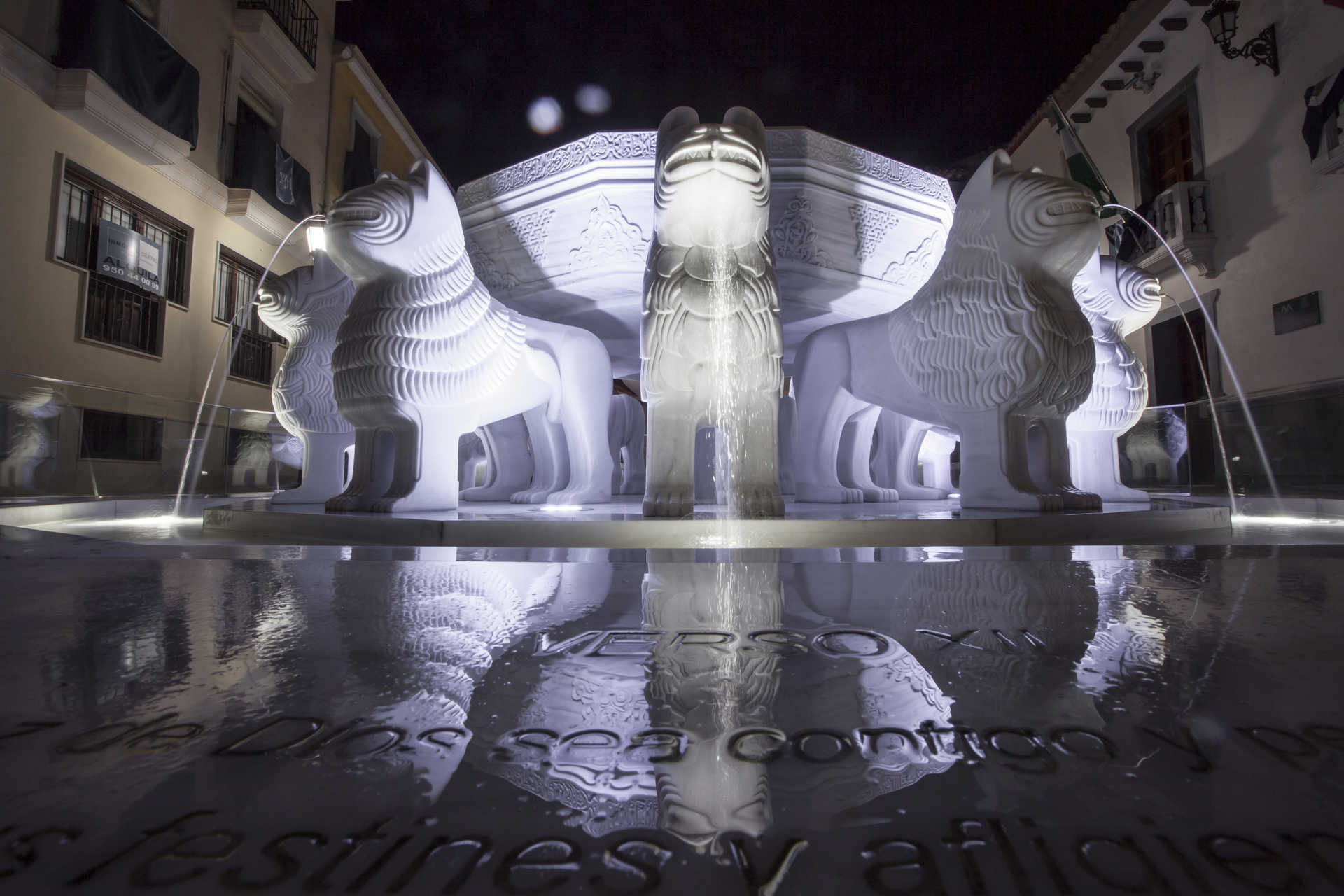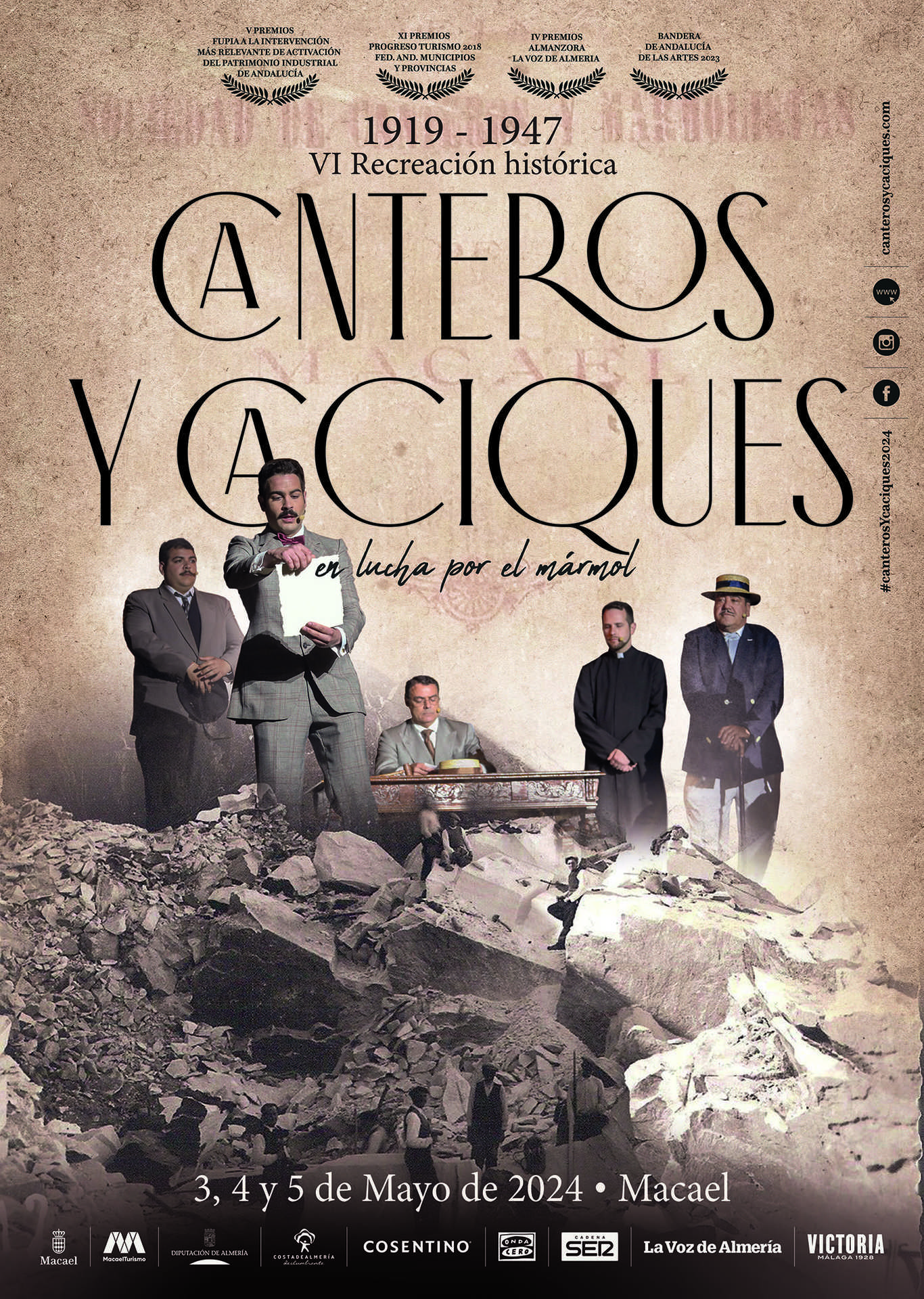Macael

To mention Macael is to talk about marble, famous world over and throughout history and used in monuments such as the Alhambra, the Roman Theatre in Merida, the Mezquita in Cordoba, the Palace of Medina Azahara, the Monastery of El Escorial, the Royal Palace, etc.
Due to this, the village, situated in the Sierra de los Filabres, has become a rich prosperous town in which this precious material is used in abundance; its true identifying mark.
History
Famous all over the world for its important marble quarries. Through history, the marble from Macael has been used; from the Phoenicians who used it for their coffins to the pavilions at EXPO 1992 in Seville.Although its marble has been used for centuries, there is no information about the origin of the village until the X and XI centuries during the Al-Andalus period. The original centre of population of this village is located two and a half kilometres away in the so-called "Macael Viejo". This place has been used as a quarry and for this reason the remains of the settlement have not been adequately preserved. In the X and XI centuries marble was extracted for Almeria Castle (Alcazaba), during the reign of Almotacin. In the XIII and XIV centuries the marble was used in the Alhambra in Granada.
With the Christian conquest at the end of the XV century, Macael surrendered to the Catholic Monarchs under the Capitulations of Baza in 1489. In 1501, by royal decree Baza was conceded the privilege of annexing the village of Macael. In 1521 the marble was extracted for the Royal Chapel of the Catholic Monarchs in Granada.
During the War of the Alpujarras (1568-1570), Macael was caught up in the conflict. One of Aben Humeya's lieutenants was El Lale, alguazil of Macael who was descended from the aristocracy of Granada. At the beginning the rebellion was put down in this AREA by the Marquis of los Velez; later don Juan of Austria arrived. Before the war, Macael had 293 inhabitants. Afterwards, they were expelled from the Kingdom of Granada and the village was repopulated with 22 families from Levante and Castile-La Mancha. In 1581 marble was commissioned for the Monastery of the Escorial.
In the XVII and XVIII centuries there was a slight increase in population and in 1699 it had 403 inhabitants. Its quarries continued to be exploited and in 1655 pieces were commissioned to pave Jaen Cathedral and in 1792 for the Royal Palace.
The exploitation of its quarries was even more important in the XIX century due to the industrialization and mechanization of the whole process of extraction, cutting, sawing and polishing which would give it a strong boost. The extension of the market came about thanks to the railway and it meant that the use of marble was extended not only for noble historic works but for private houses, furniture and other diverse uses.
Nowadays, due to the joint effort of all the administrations, this sector has not stagnated and has become competitive with other countries, as in the case of Italy. This important industrial sector has become more powerful. The Andalusian Stone Technology Centre (Centro Tecnológico Andaluz de la Piedra) has been created for testing, analysis, quality control, technical advice, technological development etc. for the whole of Andalusia.
















